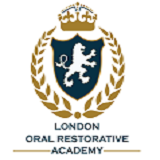
Rafael Figueiredo
Provincial Dental Public Health Officerr
University of Alberta
Canada
Biography
Rafael L F Figueiredo worked as a Researcher and an Instructor at University of Toronto, Faculty of Dentistry. He completed his MSc in 2011 and a Dental Public Health Specialty Degree in 2014 at University of Toronto. He has certification in Dental Public Health from Royal College of Dentists of Canada. He is an Assistant Adjunct Professor in Department of Dentistry, University of Alberta. In 2016, he became the President of the Canadian Association of Public Health Dentistry (CAPHD).
Research Interest
Aim: Emergency department (ED) visits for dental problems not associated with trauma (DPNAT) represent inappropriate utilization of health care resources increasing the economic burden on the health care system and affecting the quality of care delivered. The objective of this report is to describe the frequency of ED visits for DPNAT in Alberta, Canada. Methods: ED visits for DPNAT (January 2011-April 2016) were identified using the codes from the International Statistical Classification of Diseases (ICD-10-CA). The data were gathered from the National Ambulatory Care Reporting System (NACRS) database and from the Alberta Real Time Syndromic Surveillance Net (ARTSSN). The information gathered was related to the primary diagnosis of the discharge disposition of the visits. Results: A total of 147,357 ED visits for DPNAT in Alberta. The visits were made by 111,362 individuals representing 1.3 visits per person. The most prevalent primary diagnosis of ED visits for DPNAT was for diseases of pulp and periapical tissues (K04), such as periapical abscess, 45.0% of the visits, followed by disorders of teeth and supporting structures (K08), such as toothache (18.8%). The majority of the visits were made by patients from 20 to 44 years old (52.2%). ED visits for dental problems were more common than other general health conditions such as diabetes and asthma. Conclusion: The frequency of ED visits for DPNAT suggests barriers faced by the population in accessing dental care resources especially for urgent dental issues. Policy efforts and political will are needed to provide alternative options for seeking emergency dental care.

